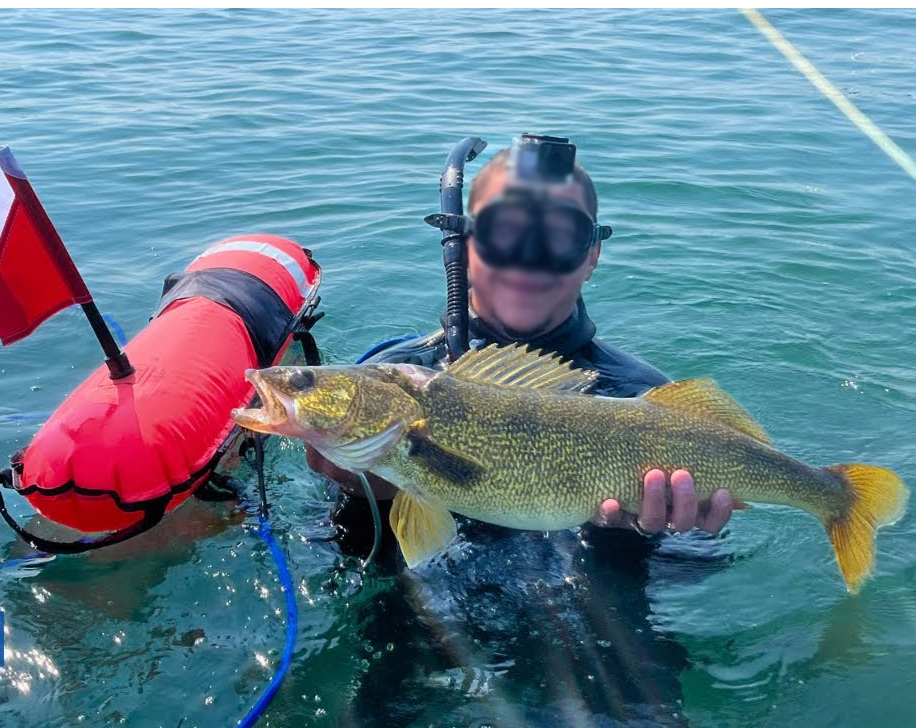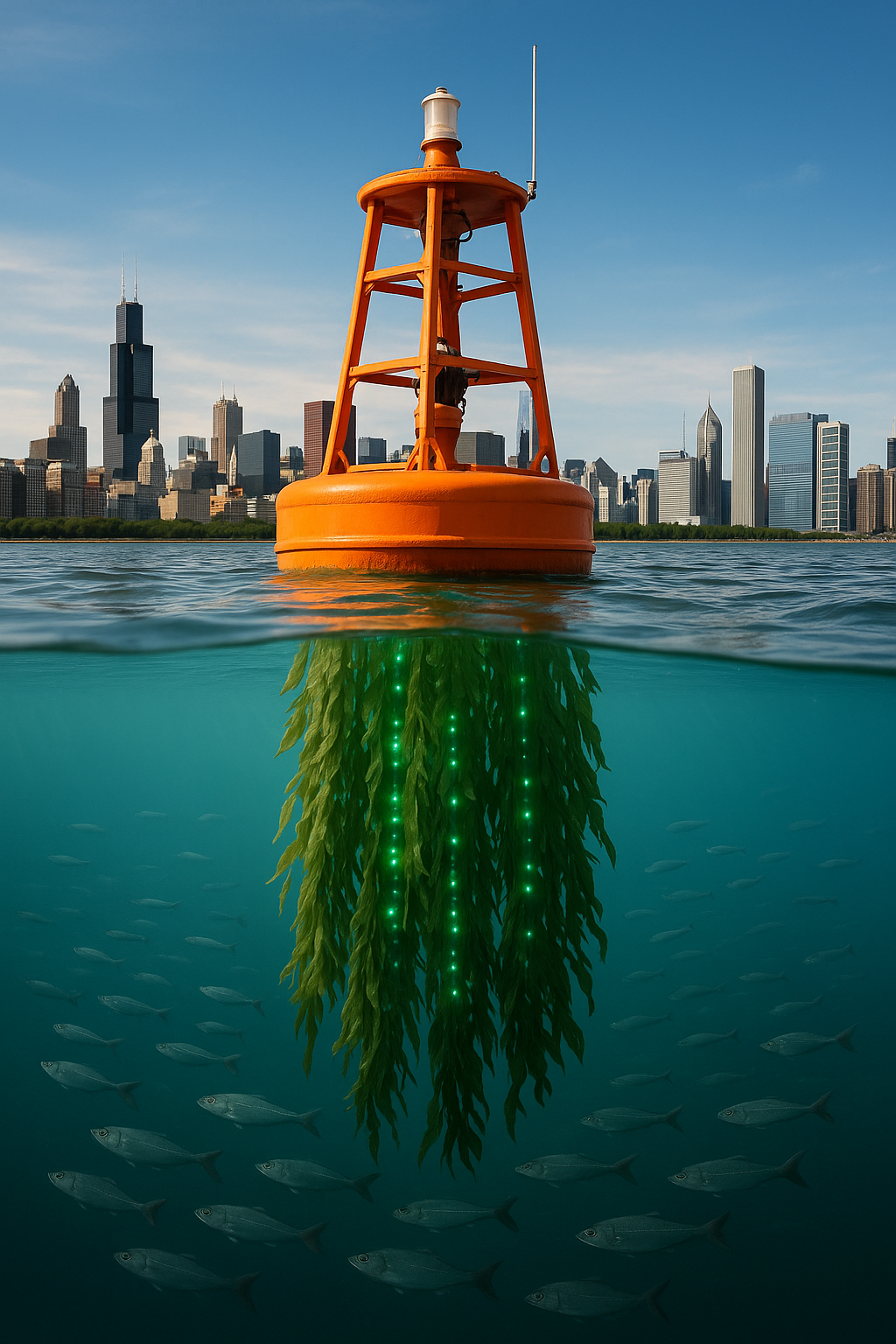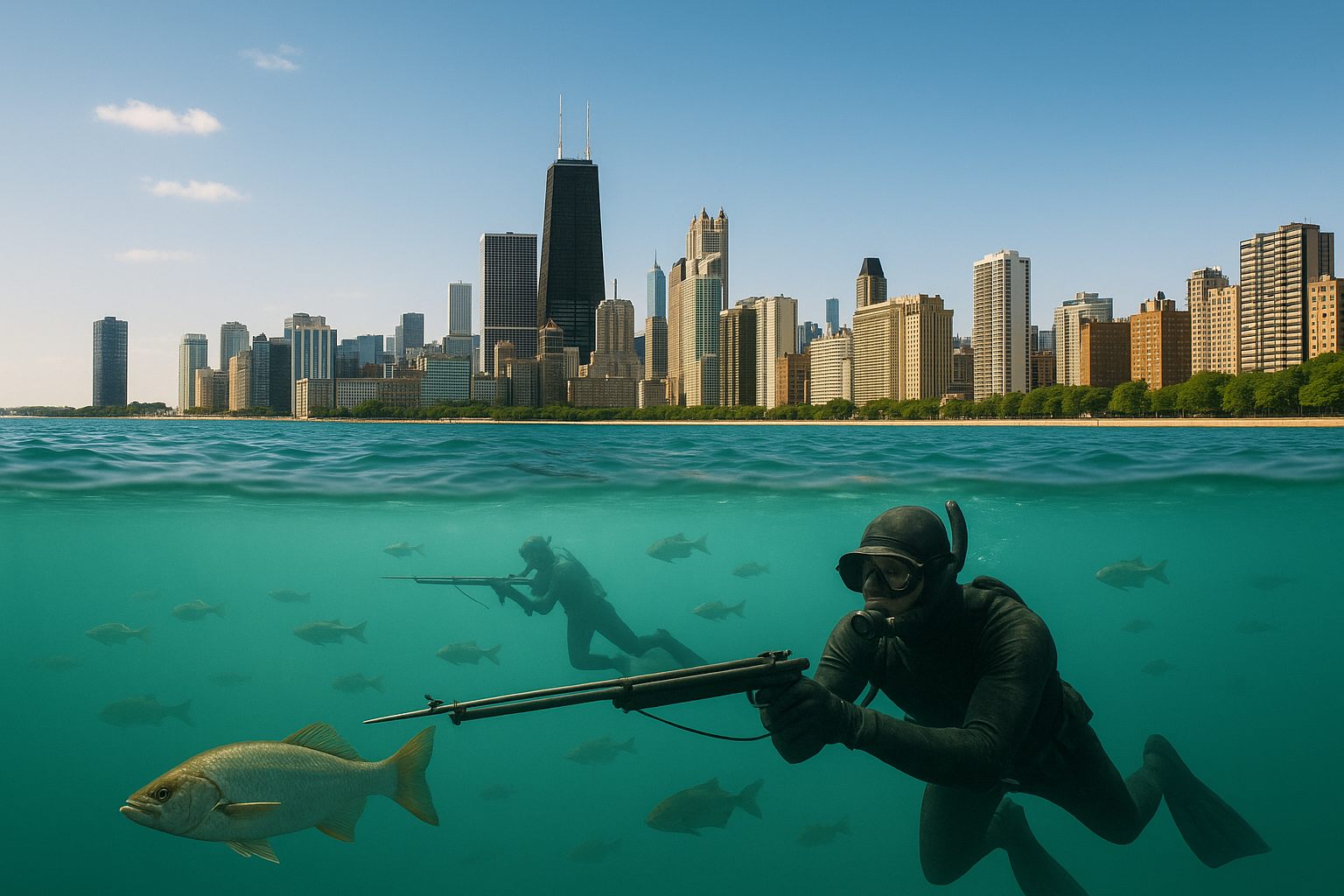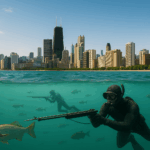Chicago, already defined by its towering skyline, culinary prestige, and relationship with Lake Michigan, is now facing an aquatic opportunity that could reshape its recreational and environmental future: becoming the freshwater spearfishing capital of the world. While this idea may sound futuristic, the foundation for such a transformation is already underfoot—and underwater.
Spearfishing has traditionally been associated with warm, saltwater coastlines, but as equipment and underwater visibility improve, freshwater environments have become increasingly popular for this ancient practice. In particular, the Great Lakes—with their vast, biodiverse ecosystems—offer significant potential for the sport. However, differences in state policies have made access to spearfishing opportunities uneven across the region.
In Michigan, spearfishing has long been allowed under certain conditions. Divers can target specific species, including carp, catfish, and bowfin, with proper licenses and in designated seasons. Wisconsin also permits spearfishing of rough fish and certain sport species, and the state supports night spearfishing under limited regulations.
In contrast, Illinois maintains more restrictive policies, particularly in Lake Michigan. Currently, spearfishing in Illinois waters is generally prohibited, with very limited exceptions in small, inland water bodies. For Chicago to join this freshwater frontier, Illinois would need to update Department of Natural Resources (IDNR) regulations to permit spearfishing in Lake Michigan for specific species, define safe, designated spearfishing zones along the Chicago shoreline, establish seasonal protections and gear requirements, and require diver safety training and fish identification certification. Legislation modeled after Michigan and Wisconsin’s frameworks could provide a blueprint for Illinois to responsibly open its waters to the sport.
A key component of popularizing spearfishing is promoting the culinary value of the catch. Unlike traditional line fishing, spearfishing allows for selective harvesting—making it a sustainable method that limits bycatch and habitat damage.
In Lake Michigan and its tributaries, a number of delicious and sport-worthy fish are suitable for spearfishing. Yellow perch is a regional favorite known for its flaky texture and mild flavor. Smallmouth bass is highly prized for its fight and firm, white meat. Walleye is one of the most sought-after freshwater table fish, offering a sweet, clean flavor. Northern pike, while often overlooked due to its bones, is delicious when pickled or grilled. Bluegill is a classic panfish, ideal for frying and smoking. Freshwater drum is underrated but flavorful when prepared fresh. Common carp, an invasive species, has surprising versatility when smoked or slow-cooked. Lake whitefish, known for its mild, flaky texture, is considered a delicacy in Great Lakes cuisine and is perfect for baking, smoking, or pan-searing.

As spearfishing grows, so too does the potential for public education about fish diversity and lake ecology. Divers and recreational participants naturally become more knowledgeable about the species they encounter, the seasonal cycles of Lake Michigan, and the impact of pollution, invasive species, and habitat degradation. Community outreach programs, school partnerships, and citizen science initiatives tied to spearfishing could create a new generation of lake stewards deeply engaged with the challenges and potential of one of North America’s greatest freshwater resources. With proper regulations, spearfishing could become a sustainable source of hyperlocal food while managing populations of invasive or overabundant species.
One visionary component in establishing Chicago as a spearfishing hub is the use of Fish Aggregating Devices (FADs)—man-made structures designed to attract fish. In saltwater fisheries, FADs have been essential tools for decades. Applied in a freshwater context, Chicago’s lakefront could see artificial reefs made from eco-safe materials, buoy-based FADs equipped with sonar to identify fish schools, underwater lighting systems to support safe night diving, and research-grade sensors to monitor species and water quality. These FAD installations would not only boost fish density near spearfishing zones, but also create habitats that support biodiversity and offer platforms for marine research and education.

To support spearfishing, Chicago would need to build and retrofit facilities to support safe entry, cleaning stations, and gear storage. These improvements could be housed at existing lakefront parks or former industrial piers. Montrose Harbor is already popular with anglers. Burnham Harbor is centrally located near museums and public transit. Calumet River outflow areas are where invasive species concentrations are high. Training centers, tourism hubs, and culinary showcases could complement this infrastructure, further integrating spearfishing into Chicago’s recreational and economic life.
For those new to the sport, spearfishing offers a deeply immersive experience unlike any other. Diving into Lake Michigan brings a sense of serenity and thrill—where urban noise fades, replaced by the muffled pulse of underwater currents. As the diver glides through the cool, clear water, every movement is deliberate, requiring patience, control, and presence.
The adrenaline rises when a fish appears in view. Stalking it without startling it demands focus and calm breathing. Unlike line fishing, spearfishing offers the unique power of choice: the spearo can wait until the perfect fish comes into range—perhaps a golden perch or a gliding walleye—before taking a shot. The satisfaction of a clean catch is immediate and personal.
Beyond the hunt, the act of swimming itself becomes part of the reward. It’s vigorous exercise with a meditative quality. Many spearos describe it as therapeutic—a physical connection to nature that sharpens both body and mind. For Chicagoans, it’s a way to reclaim the lake as both a playground and a pantry.
To participate in spearfishing safely and effectively, newcomers need to be equipped with a few essential tools. A pole spear or speargun is the primary hunting instrument, with the choice depending on skill level, target species, and water conditions. A torpedo buoy with a diver-down flag, often brightly colored and tethered with a floatline, helps signal a diver’s location to boaters and provides a place to attach caught fish. Divers typically wear a lightweight wetsuit appropriate for Lake Michigan’s temperatures, along with a weight belt to achieve neutral buoyancy. Fins enhance swimming efficiency, and a dive mask with a snorkel allows for long surface intervals and clear underwater vision. A dive knife is also a crucial safety item, useful for detangling from fishing lines or vegetation. Together, this gear provides both safety and effectiveness in the water, ensuring that spearos can move confidently and responsibly through the underwater environment.
Introducing spearfishing would provide a new tool for environmental management—particularly against invasive fish that threaten native ecosystems. At the same time, it would generate revenue from permits, tournaments, and guided excursions, create demand for new technologies in spearfishing gear, drones, and underwater wearables, and spur job growth in eco-tourism, marine education, and culinary innovation.
While Chicago has not yet earned its title as the world’s freshwater spearfishing capital, the potential is undeniable. With changes to Illinois law, investment in aquatic infrastructure, and a focus on sustainability and flavor, the city could establish a bold new identity—one centered on submerged adventure and lake-to-table living.
As Great Lakes communities seek new ways to live with and care for their waters, Chicago might just lead the way—pole spear in hand.






